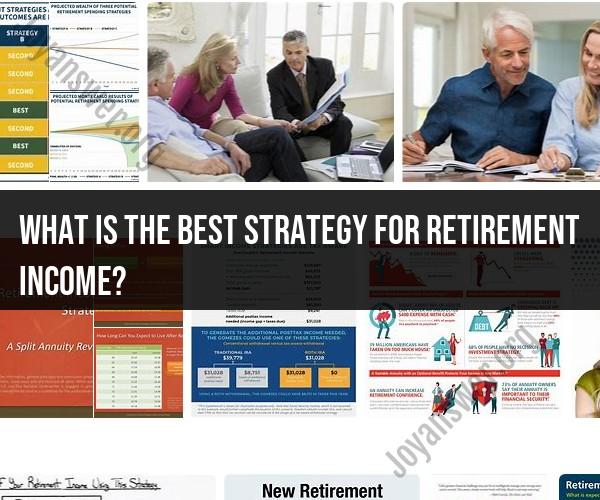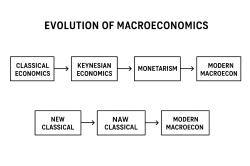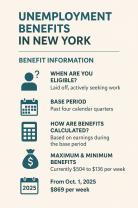What is the best strategy for retirement income?
The best strategy for retirement income depends on your individual financial situation, goals, and preferences. However, a well-rounded retirement income strategy typically includes a combination of income sources and investment approaches to ensure financial security throughout your retirement years. Here are key elements of a comprehensive retirement income strategy:
Social Security Benefits:
- Begin by understanding your projected Social Security benefits. You can access this information through the Social Security Administration's website. Decide when to start receiving benefits based on your retirement age and financial needs.
Personal Savings and Investments:
- Accumulate savings in retirement accounts such as 401(k)s, IRAs, and taxable investment accounts. Diversify your investments across asset classes (stocks, bonds, real estate) to manage risk and generate income.
Pension Income:
- If you're entitled to a pension from your employer or a government program, factor this income into your retirement strategy. Determine the pension payout options available to you, such as single-life or joint-life annuities.
Annuities:
- Consider purchasing an annuity, which is a financial product that can provide a steady stream of income in retirement. Annuities come in various forms, including immediate annuities, deferred annuities, and variable annuities.
Withdrawal Strategies:
- Develop a withdrawal strategy for your retirement accounts. The 4% rule is a common guideline, suggesting that you can safely withdraw 4% of your retirement savings in the first year of retirement and adjust the withdrawal amount for inflation in subsequent years. However, your withdrawal rate should be tailored to your specific circumstances.
Part-Time Work or Consulting:
- Consider working part-time or engaging in consulting work during retirement to supplement your income and keep your skills active. This can be particularly beneficial in the early years of retirement.
Healthcare Planning:
- Include healthcare costs in your retirement budget. Medicare typically covers some healthcare expenses, but additional coverage may be needed. Explore options such as Medicare supplements (Medigap), Medicare Advantage plans, or long-term care insurance.
Tax Efficiency:
- Structure your retirement income to minimize taxes. Understand the tax implications of different income sources, such as Social Security, withdrawals from retirement accounts, and investment income.
Budgeting and Expense Management:
- Create a realistic budget that accounts for your retirement expenses, including housing, healthcare, leisure activities, and potential travel. Continuously track and adjust your spending to ensure you stay within your means.
Emergency Fund:
- Maintain an emergency fund in a liquid, accessible account to cover unexpected expenses or financial emergencies without jeopardizing your long-term investments.
Estate Planning:
- Develop an estate plan that includes a will, power of attorney, and healthcare directives. Consider how you want to leave assets to heirs or charitable organizations.
Review and Adjust:
- Regularly review your retirement income strategy and adjust it as needed based on changes in your financial situation, goals, and market conditions.
It's crucial to work with a qualified financial advisor or planner to tailor your retirement income strategy to your specific circumstances. They can help you assess your financial situation, create a personalized plan, and provide guidance on managing your retirement assets to ensure a financially secure retirement.
Crafting a Retirement Income Strategy: Best Practices and Approaches
Crafting a retirement income strategy is an important step in ensuring a comfortable and secure retirement. Here are some best practices and approaches:
- Start early. The earlier you start planning for retirement, the more time your money has to grow.
- Set realistic goals. Consider your desired lifestyle in retirement and how much money you will need to support it.
- Create a budget. Once you know how much money you need, create a budget to track your income and expenses. This will help you to make sure you are on track to reach your goals.
- Diversify your investments. Don't put all your eggs in one basket. Invest in a variety of assets, such as stocks, bonds, and cash, to reduce your risk.
- Consider your risk tolerance. How much risk are you comfortable with? Some investments are riskier than others, but they also have the potential for higher returns.
- Rebalance your portfolio regularly. Over time, the performance of different asset classes will fluctuate. Rebalancing your portfolio regularly will help to ensure that it remains aligned with your risk tolerance and investment goals.
Ensuring Financial Security in Retirement: Expert Income Strategies
Here are some expert income strategies for ensuring financial security in retirement:
- Use a combination of income sources. Don't rely on just one source of income in retirement. Consider a combination of sources, such as Social Security, pensions, investment income, and part-time work.
- Create a drawdown plan. A drawdown plan is a strategy for withdrawing money from your retirement savings in a sustainable way. It is important to create a drawdown plan that takes into account your life expectancy, income needs, and risk tolerance.
- Consider an annuity. An annuity is an insurance product that provides a guaranteed stream of income in retirement. Annuities can be a complex product, so it is important to understand the different types of annuities and their features before purchasing one.
- Have a plan for unexpected expenses. Unexpected expenses, such as medical bills or home repairs, can derail your retirement plans. It is important to have a plan for unexpected expenses, such as an emergency fund or long-term care insurance.
Maximizing Your Retirement Income: Smart Financial Planning Tips
Here are some smart financial planning tips for maximizing your retirement income:
- Delay retirement. The longer you work, the more time your money has to grow and the more Social Security benefits you will earn.
- Work part-time in retirement. Working part-time in retirement can help to supplement your income and keep you active.
- Downsize your home. If you have a large home, consider downsizing to a smaller one in retirement. This can save you money on property taxes, maintenance, and utilities.
- Reduce your debt. Pay off any debt before you retire. This will free up more of your income to support your lifestyle in retirement.
- Review your budget regularly. As your income and expenses change in retirement, review your budget regularly and make adjustments as needed.
By following these best practices and tips, you can craft a retirement income strategy that will help you to achieve your financial goals and ensure a comfortable and secure retirement.
It is important to note that there is no one-size-fits-all retirement income strategy. The best strategy for you will depend on your individual circumstances and financial needs. It is important to work with a financial advisor to develop a retirement income strategy that is right for you.













